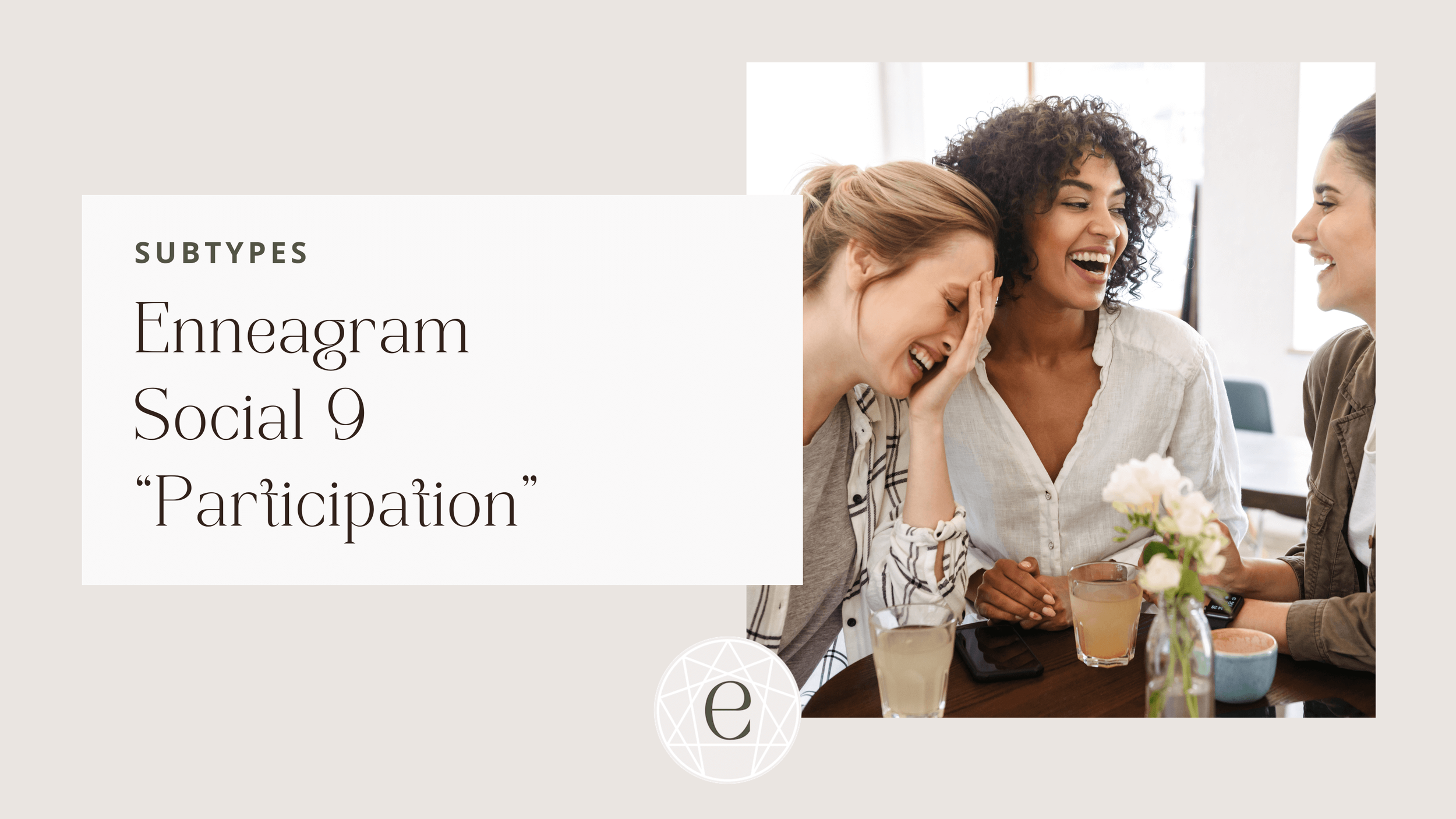Enneagram Social Nine: The Community-Seeking Nine
Enneagram Nines are often described as peacemakers—easygoing, agreeable, and conflict-averse. But the way they seek peace depends on which instinct is dominant. Each subtype expresses the Nine’s “go along to get along” energy differently.
The Social Nine (Social 9) has been nicknamed “Participation,” a term used by Enneagram teacher Beatrice Chestnut in The Complete Enneagram, drawing on the work of psychiatrist Claudio Naranjo. This nickname reflects the Social 9’s tendency to merge with groups, communities, and social roles as a way of finding belonging and maintaining harmony.
For accessibility, I’ll also call this subtype “The Community-Seeking Nine.” This phrase highlights how Social 9s instinctively look to groups for identity, purpose, and security.
In this post, we’ll explore the defining traits of the Social Nine, how they show up in relationships and work, how they differ from the other Nine subtypes, and what growth looks like for them.
The Social Nine at a Glance
At their core, Nines long for peace and harmony. They dislike conflict and will often go along with others to avoid tension.
The passion of Type Nine is sloth—not laziness, but a forgetting of the self in order to merge with their surroundings.
When the Social instinct leads, this merging takes the form of group belonging. Social 9s often identify strongly with communities, organizations, or causes, seeking a sense of worth through participation.
🔑 Key themes for Social 9s include:
Merging with groups
They often define themselves by their community or social circle.Belonging
They have a deep desire to feel included and connected.Adaptability
They can adjust to fit into group dynamics with ease.Self-forgetting
Their focus on the group can make it harder for them to see or assert their own needs.
In short: Social 9s often feel most comfortable when they are part of something bigger than themselves.
Strengths and Challenges of Social 9s
Social 9s bring warmth and steadiness to groups, but they also face unique struggles.
💪 Strengths
Inclusive and welcoming
They make others feel comfortable and valued.Reliable team members
They contribute steadily without demanding the spotlight.Good mediators
They often smooth over conflicts in groups.Adaptable and flexible
They can fit into many different environments.
⚠️ Challenges
Loss of individuality
They may over-identify with groups, losing sight of their own voice.Fear of exclusion
They can avoid speaking up if it risks conflict or rejection.Hidden resentment
Their tendency to go along can lead to unspoken frustration.Never fully belonging
Paradoxically, their merging may still leave them feeling like an outsider.
The Social 9’s gift of group harmony is powerful, but their challenge is to remember that belonging begins with knowing and claiming their own identity.
Social 9s in Relationships and Work
How does this subtype show up in daily life? Let’s look at relationships and work together, since the themes overlap.
❤️ In Relationships
Social 9s are attentive, cooperative, and loyal. They value togetherness and enjoy sharing activities, traditions, or causes with loved ones.
But their tendency to merge can lead to over-adapting in relationships. They may avoid expressing their true needs if they think it could cause conflict or make them seem different. Over time, this can leave them feeling invisible or disconnected, even while surrounded by people.
💼 At Work
In professional life, Social 9s thrive in team environments. They are steady, supportive colleagues who help groups run smoothly. Their ability to adapt makes them excellent collaborators.
However, they may avoid leadership roles or visibility if it feels risky. They might also lose touch with their own career ambitions, following the group’s direction instead of pursuing their own.
For growth, Social 9s need to practice asserting their own voice and vision, even when it risks conflict.
How Social 9s Differ from Other Type Nine Subtypes
Each Nine subtype pursues peace differently:
Social 9 vs. Self-Preservation 9:
Self-Preservation 9s seek peace through routines, comfort, and physical stability.
Social 9s seek peace through group belonging and participation.
Self-Preservation 9s focus inward on comfort, while Social 9s look outward to community.
Social 9 vs. Sexual 9:
Sexual 9s seek peace by merging with a partner or significant relationship.
Social 9s seek peace by merging with a group or collective identity.
Sexual 9s are more relationally intense; Social 9s are more community-focused.
These contrasts highlight how the same “peacemaker” energy takes on different shapes depending on the instinct.
The Growth Path for Social 9s
For the Social Nine, growth means finding belonging without losing themselves.
Key growth practices include:
Clarifying personal identity:
Ask: “Who am I apart from my group?”Practicing visibility:
Share opinions openly, even if they differ from the group.Allowing healthy conflict:
Recognize that disagreement doesn’t equal exclusion.Balancing participation with self-expression:
Contribute to the group while staying rooted in personal values.
When Social 9s embrace their own individuality, their natural gift for harmony becomes more powerful, creating communities that value both connection and authenticity.
Final Thoughts
The Social Nine—Participation, or the Community-Seeking Nine—is a warm, steady presence in groups and communities. They create belonging, mediate conflicts, and adapt easily.
Yet their growth comes from remembering their own individuality and practicing the courage to stand apart when needed.
If you identify with this subtype, you might ask yourself:
“Am I going along with the group at the cost of my own truth?”
Want to explore all 27 Enneagram subtypes and see how they shape behavior, relationships, and growth?
👉 Download my free Enneagram Subtypes Guide here.


